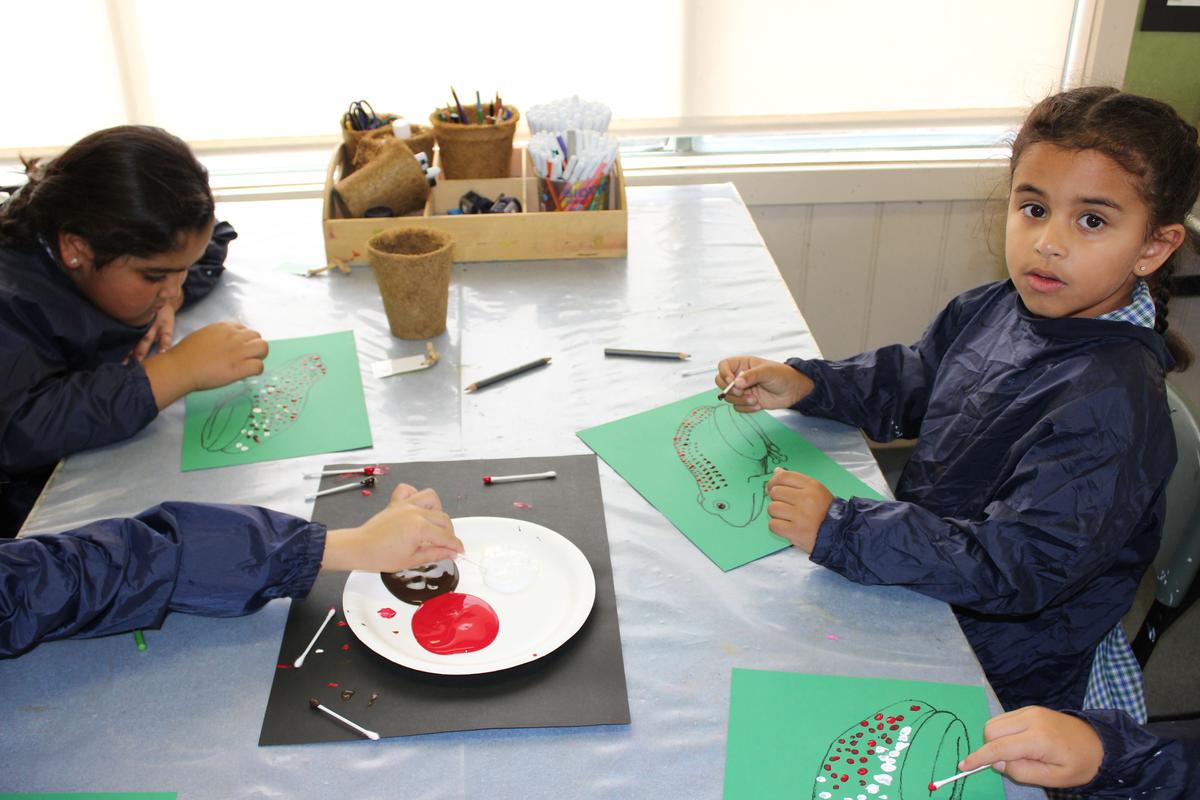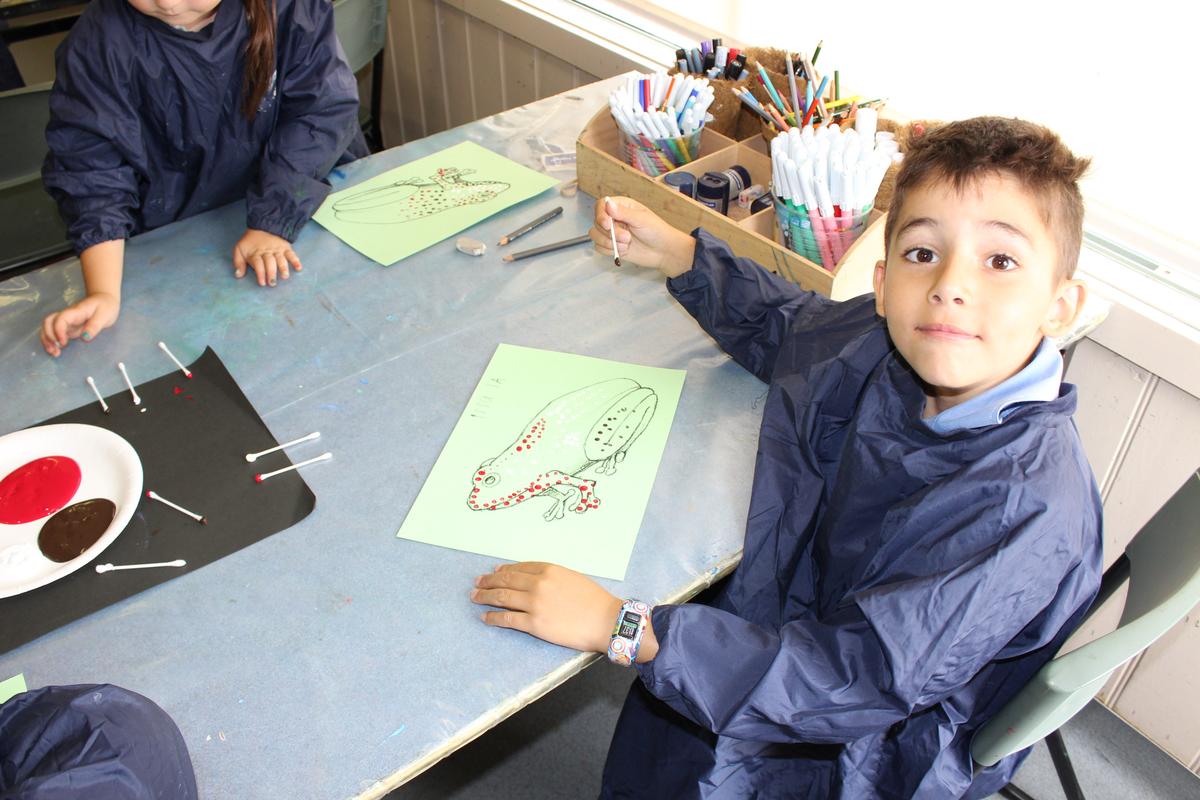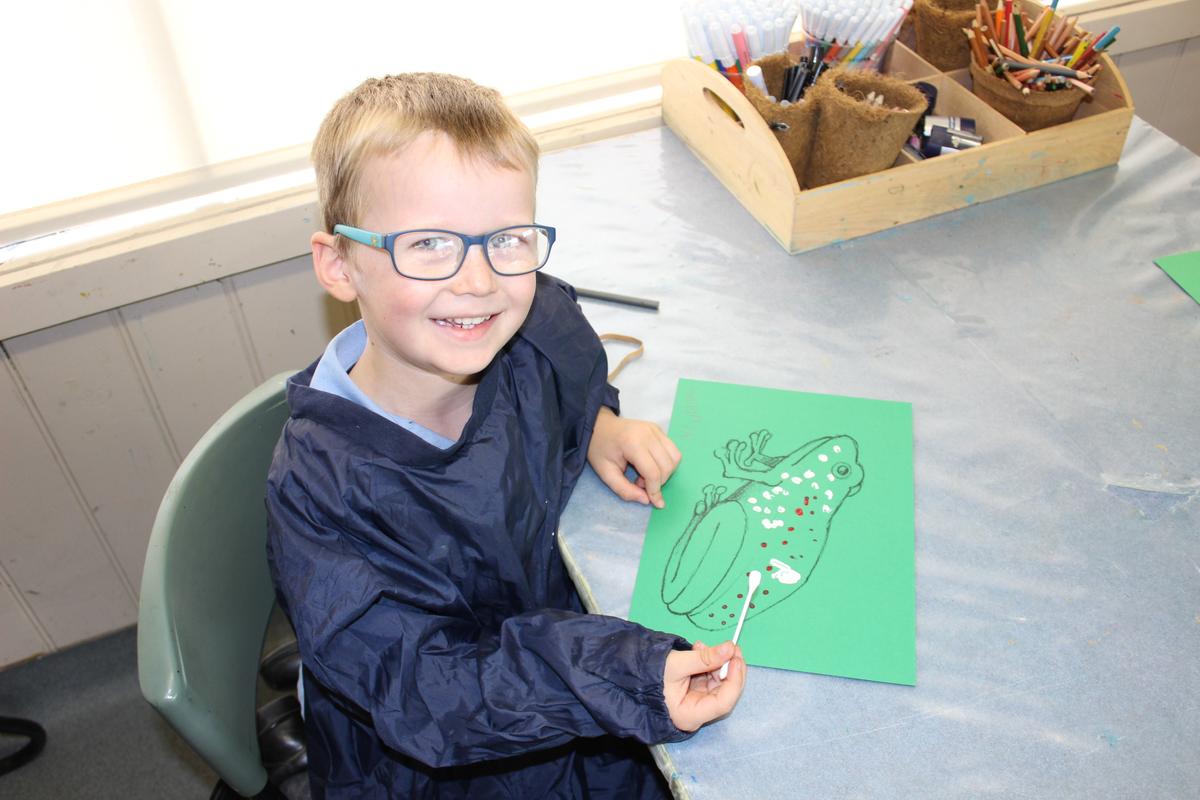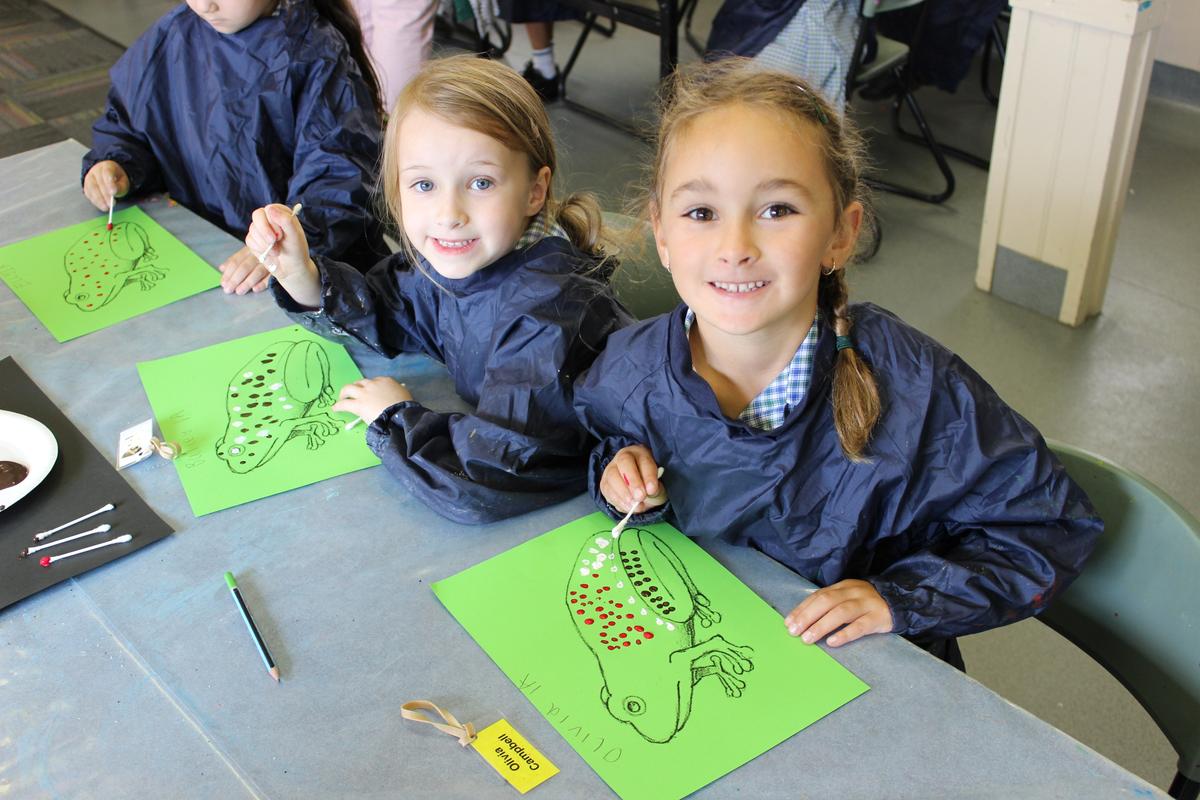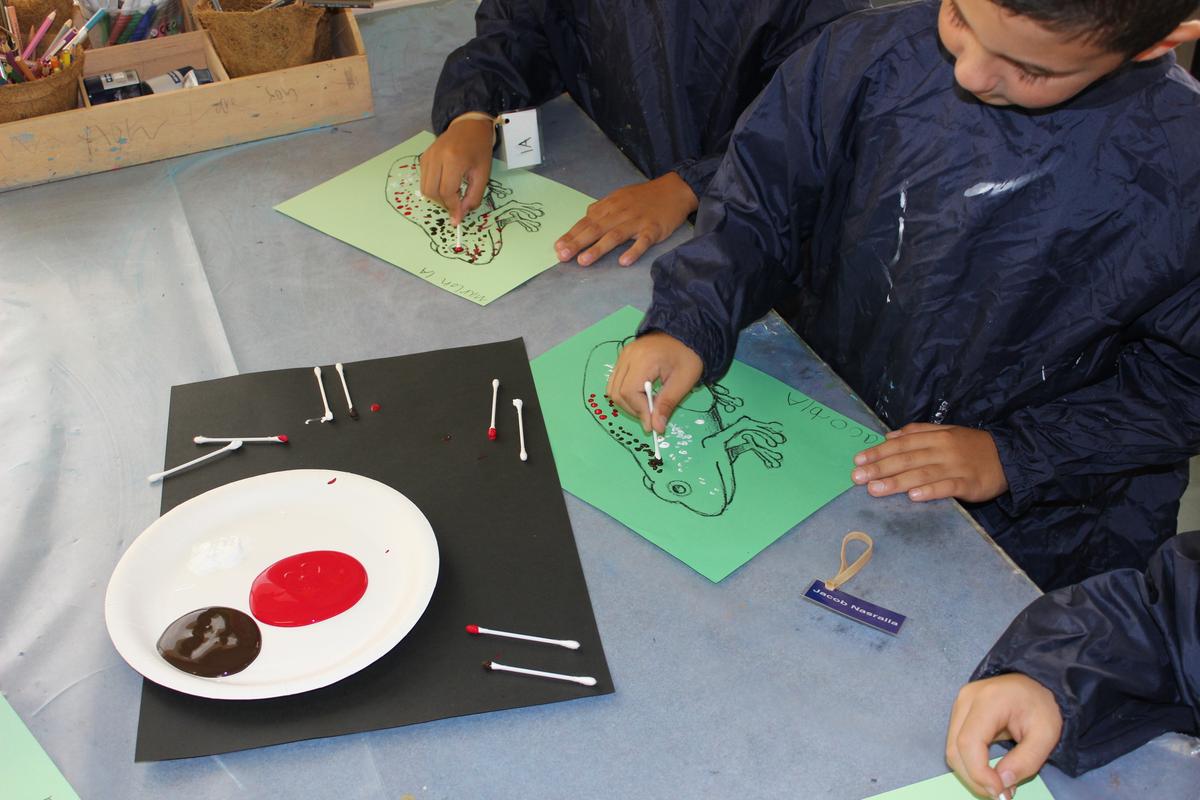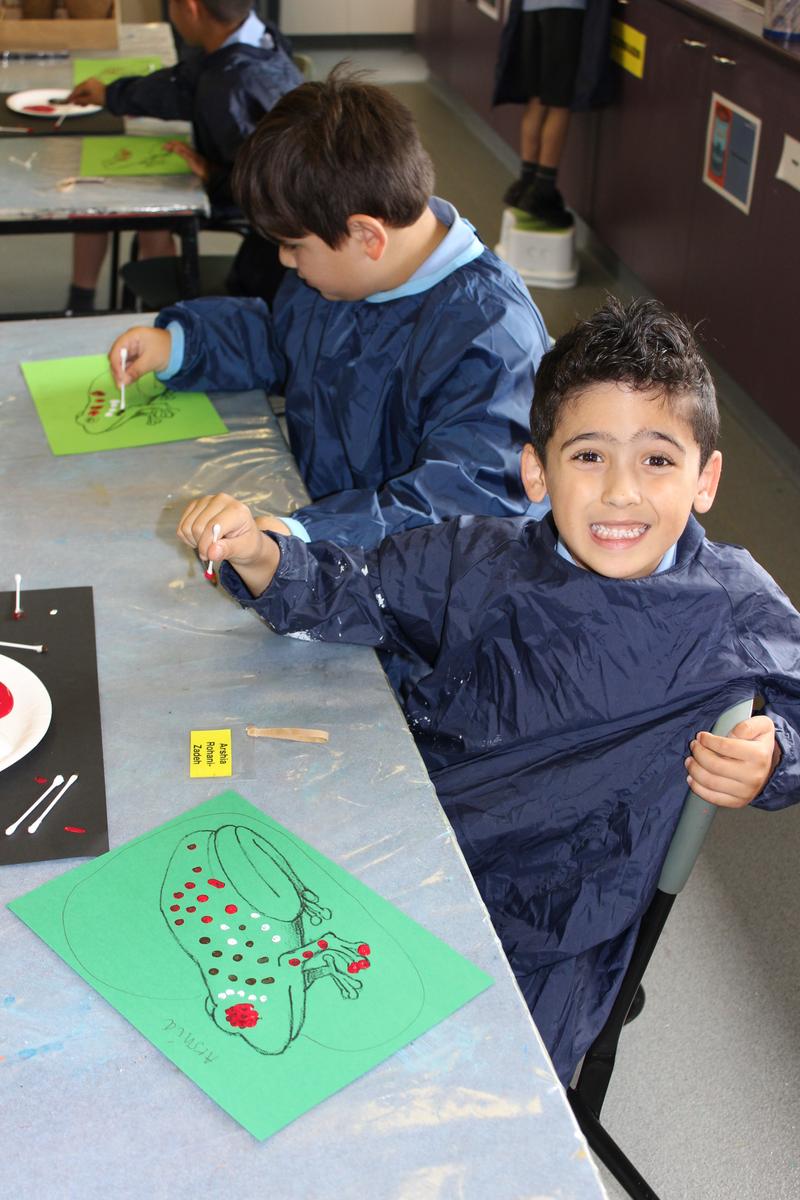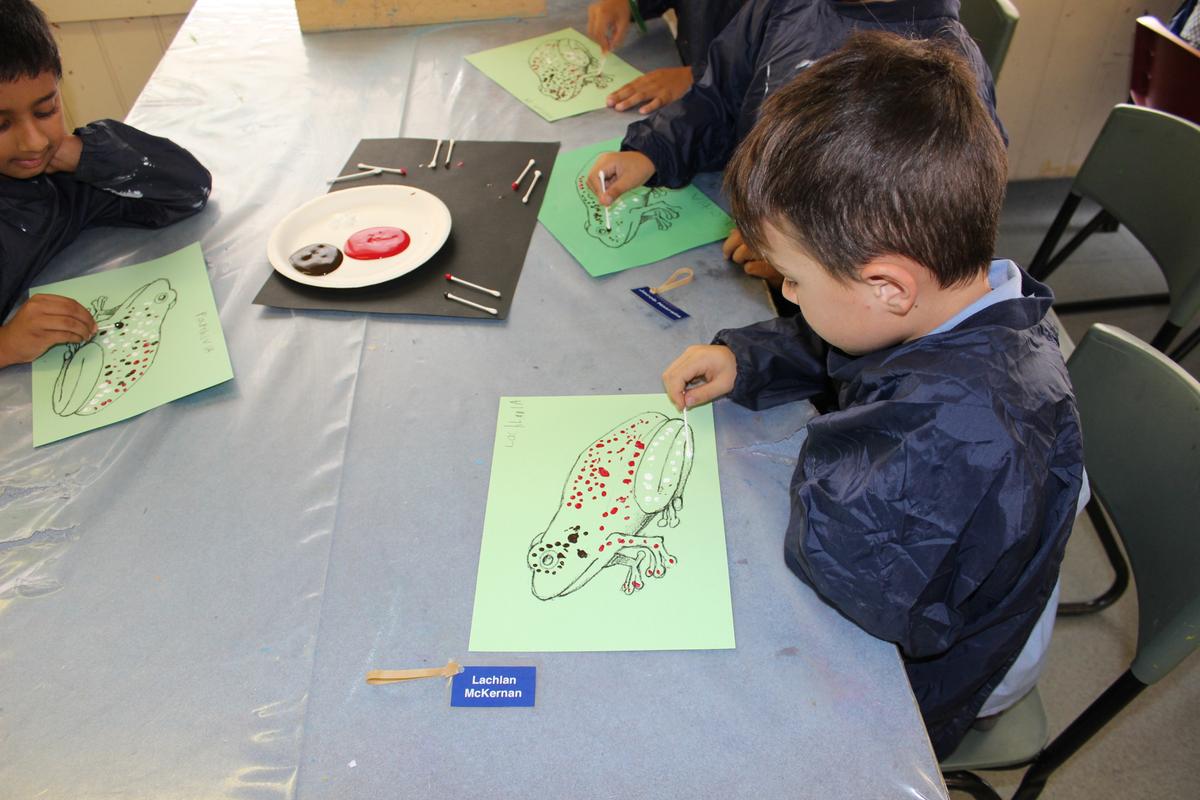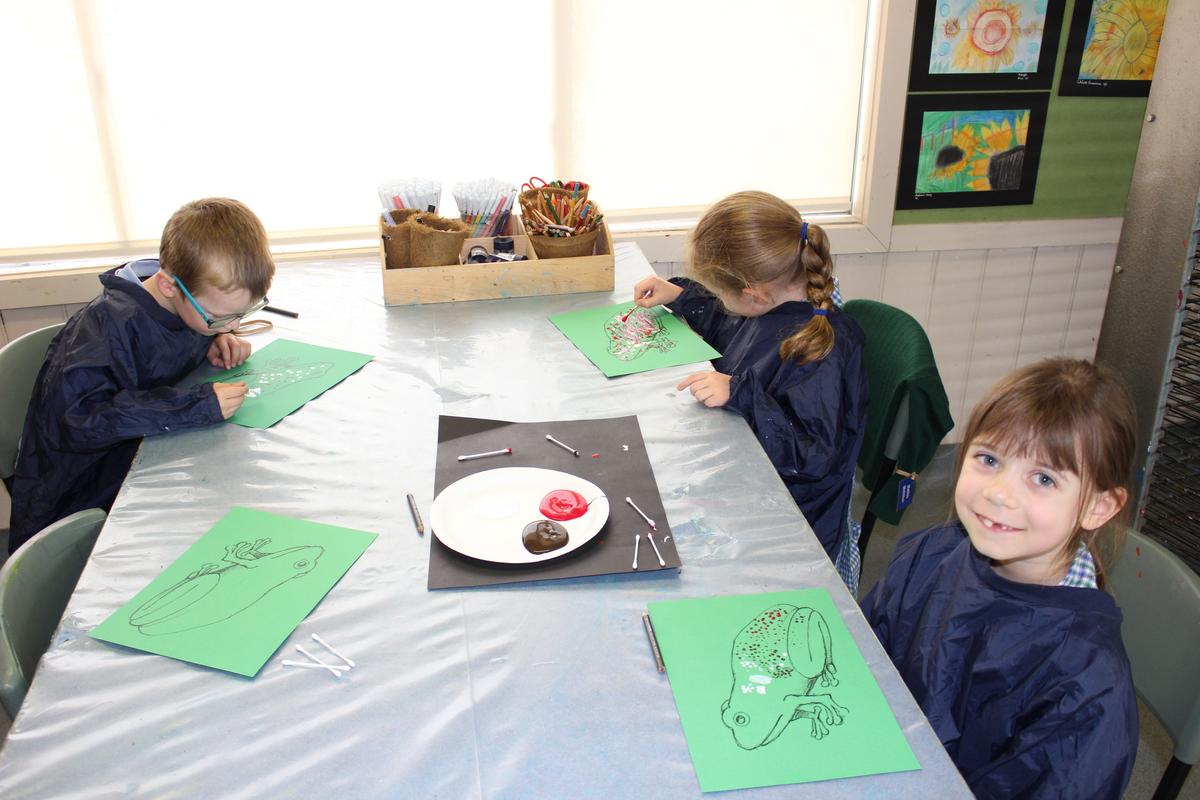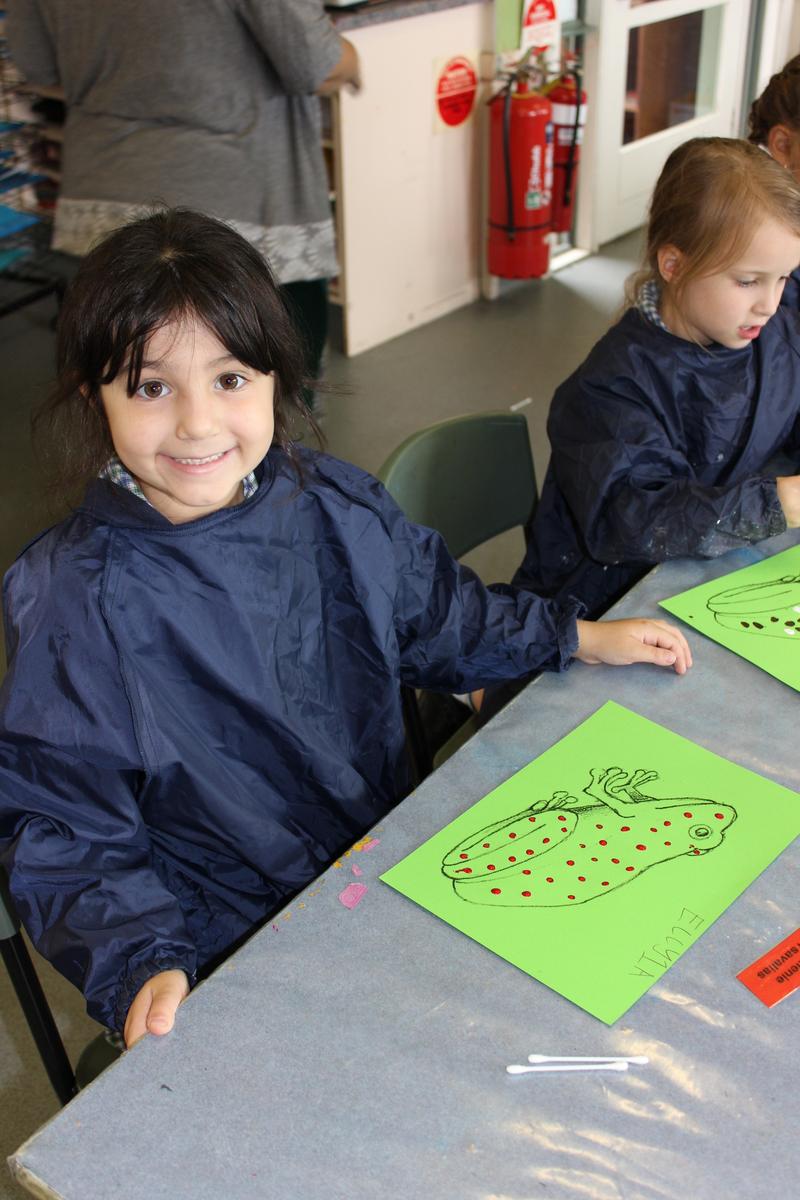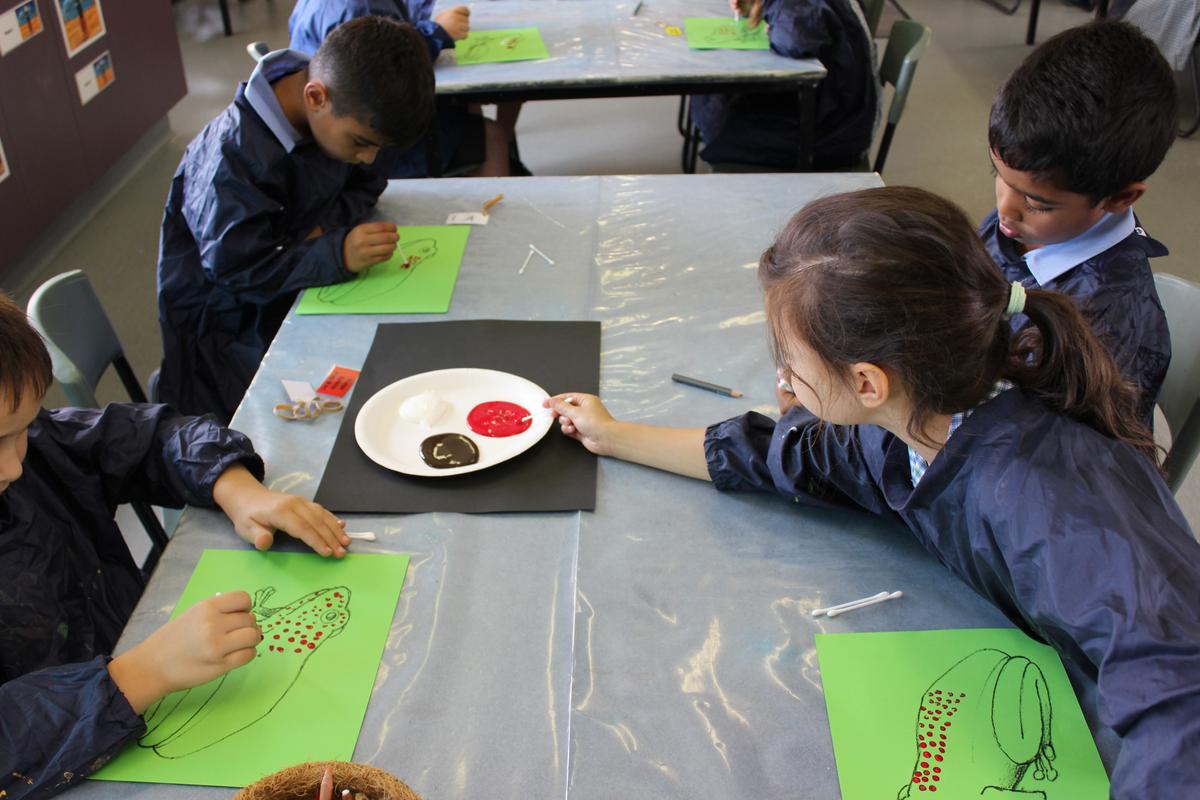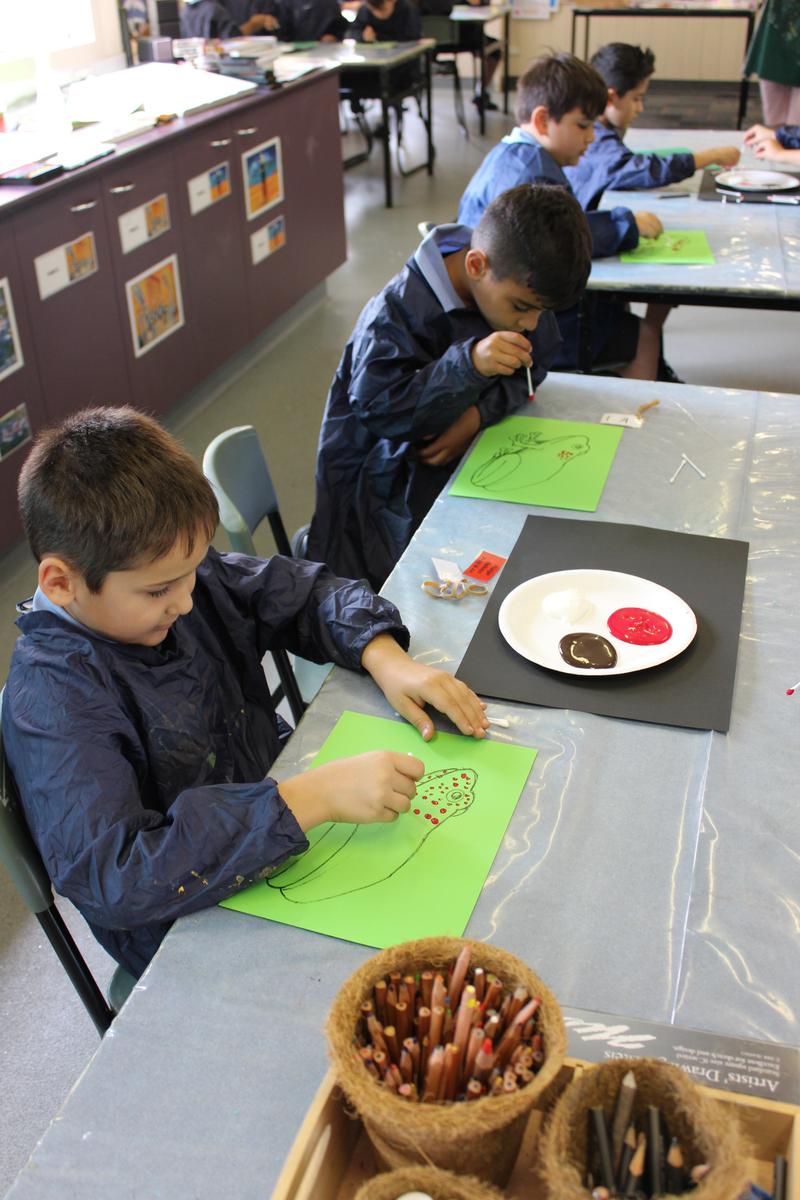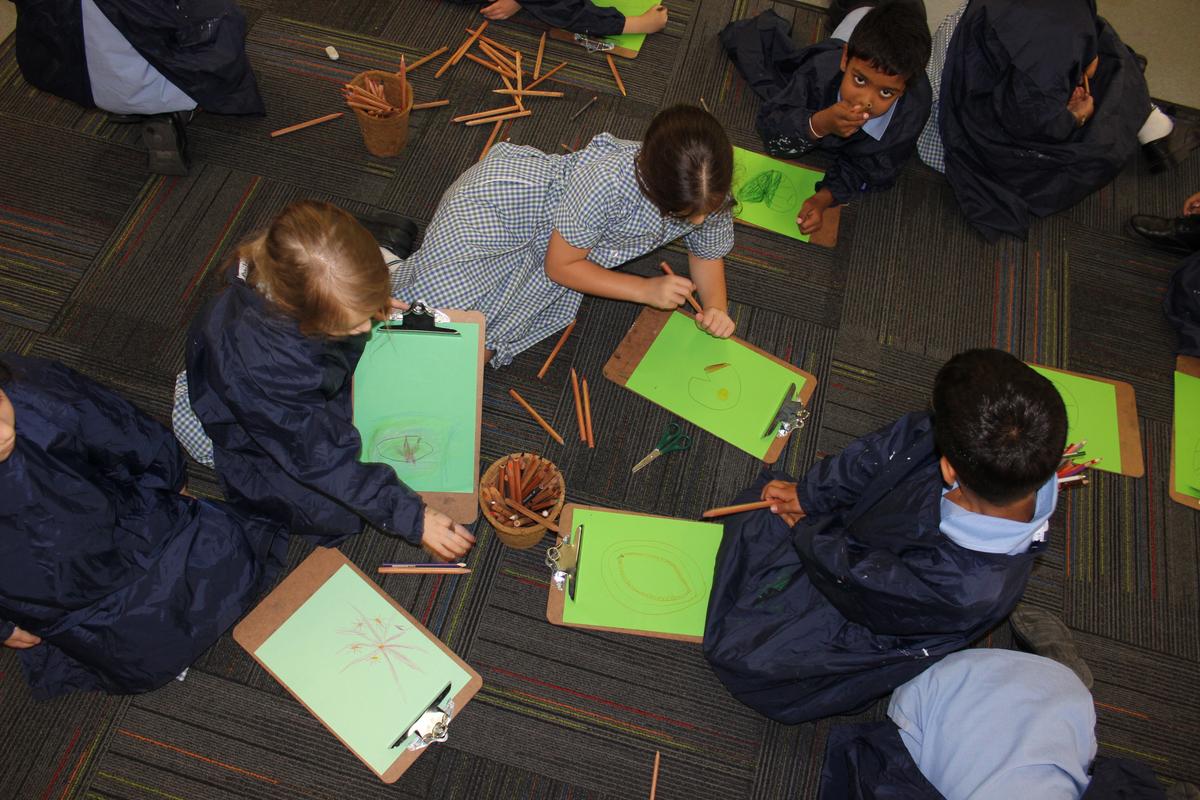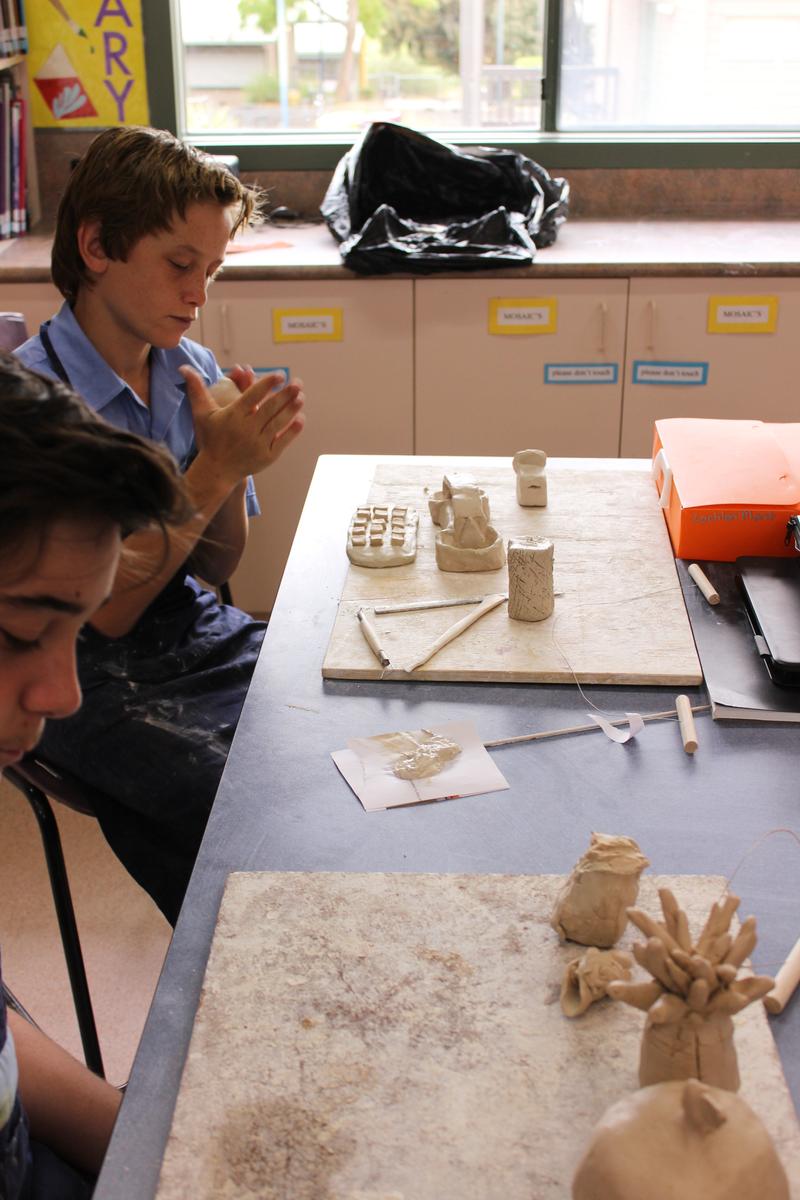Visual Arts

Year 1 Spotty Frogs
Visual Art 1 (commonly known as V1 at Aitken College) is a place of discovery, learning and fun. The primary classroom is often energetic but it can also be calm and quiet, dependent on the job at hand. I often imagine what it would look like on time lapse, the volume of students it sees, the pack up and set up, the variety of tasks being taught in a single day, let alone a term.
I briefly touched on how students respond to stimuli in the previous article, all the while developing fine motor skills and creating something of their own, unique and special in its own way.
The pictures capture a Year 1 class beginning a new task. It perfectly demonstrates how the presentation of one idea, artist or style leads each student on a path, one that they often take in many directions. This is the beauty of a subject that allows the young to respond with unadulterated joy, vivid imagination, a fearless creativity where they encourage difference and one another. This co-operative learning task, aptly named ‘Spotty Frogs’ requires each student to share and carefully organise communal materials, working at their own pace. They carefully apply dabs of paint without mixing, in various thicknesses.
The delicacy of what may look like simple application tests both control and accuracy, working within a frog template with small ‘tools’, also known as cotton buds. Many are detailed, some extremely so; others form patterns, some create dotted lines while others enjoy the process of application more than planning the colour placement or a design. On completion, students move to the floor, to complete their lily pads, while the tables are prepared for the following class who will do something different, only a few short minutes away.
The primary room, teacher and studio assistant are organised, fully prepared and set up. This ensures students can move quickly through tasks and work stations. This planning and attention to detail can be overlooked; however, with 30 student’s all working with messy materials, it is the careful guidance of Ms Mazzarotta who ensures each lesson flows into the next with minimal disruption; it is her care and preparedness that allows the children to delight in new mediums throughout the year. She creates lessons that engage, using a remarkable variety of mediums in the Prep to Year 5 curriculum. She therefore teaches diverse techniques, about art history and artistic practice, how to follow procedures, to be kind and considerate of one another, to help one another, all the while taking ownership of their own work and mess. These little life skills are hidden in each brief and hectic Art lesson. Students are learning more than the basics, they are becoming young artists, creative and thoughtful citizens who can, on this occasion, find joy in a spotted frog and Manet inspired lily pad.
Year 8 Ceramic Unit
Ceramics is often one of the first units presented in Year 8 and Year 10 Art. As a sculptural medium, alternatives are taught in Year 9 and Year 11. They require specialist skills, engineering, construction forethought and planning. The reason for starting with clay is mostly driven by time. Semester subjects require the completion of a long and multi layered process in limited time. For the sculpture to be complete, the work needs to be designed before it can be sculpted, dried, fired, often glazed, re-fired and assembled (if required). The design process needs to consider the parameters of the brief and is an important creative process when responding to thematic considerations. Research is often undertaken and sources of inspiration identified. Construction usually begins in or around week 3. Difficult forms often take a full term to complete, occasionally more.
The Year 8 students (pictured) are working on the broad theme ‘What’s up there?’ They need to create a base that is heavy enough to support and balance two or three forms that will protrude from the form. These will later be attached with 8mm aluminium rods. Clay shrinks both on drying and firing, so the holes need to be considered before the completed forms are taken to the kiln room. They must also be hollow. The ‘floating’ forms need to relate to one another and their base. Such open topics driven by skill development allow students to construct using various techniques and encourage diversity. Once complete, some photographs will be published in future newsletters.
I hope you and your child/children are enjoying the year so far. I hope they are sharing some of their creative endeavours with you; whether studying art or an alternate subject where their own ideas drive the work. Ask any person, young or old what they imagine when they hear the word purple, blue, aqua, burnt orange, lime or gold and a conversation is sparked, no two ever the same. Ask a young child not what they drew but instead, what they imagined when drawing it and an opportunity to engage is opened. My Year 12 students engage often, they inspire me each time they present an idea, each time they submit annotations, talk on their artistic research or analyse an artwork I present with fresh, new eyes. They are deep thinkers and each conversation adds value; as we teach, we give and take from our classrooms and both teachers and students add value. There is a lot of power in that.
Mrs Linda Camilleri
Head of Faculty Visual Arts

